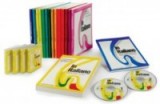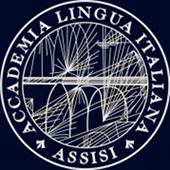The need for the acquisition of foreign languages has become part and parcel of daily life. Today people of all ages and from all walks of life need to study and learn a foreign language since being able to use other languages is an essential tool for the modern world for various reasons. Although mass communication has brought all peoples into closer contact, it has not eliminated the need to be able to talk to others in their language and on their cultural terms. New society requirements to education and personality development, new life conditions have changed the attitude to the process of teaching and learning foreign languages. While language teaching in earlier times emphasised grammatical form and accuracy of spelling and pronunciation, a newer view places the emphasis on what learners can accomplish with the language they are learning. As a result of this development a lot of pressure is being exerted on the language teaching profession since foreign language teaching has become subject to the wishes, needs and demands of people other than language teachers themselves.
With all this in mind, Angelo and Gaia Chiuchiù (Volumes 1-2) together with Giuseppe and Marion Pace Asciak (Volume 3) developed the project Italiano in, volumes 1-2-3, published by Guerra Edizioni, Perugia, Italy. Italiano in is a course intended for the learning of Italian as a foreign language, starting from level A1 to level B2/C1, in accordance to the level descriptors of the Common European Framework for Languages issued by the Council of Europe. The project, which gives equal importance to all four linguistic abilities – spoken, written, listening and reading – is divided in three volumes, one for level A1 and A2, one for level B1 and the third one for level B2/C1. Unlike many other foreign language teaching books, these volumes are presented in a ring file format containing A4 sheets, making it not only very attractive for students but, above all, practical and easy to use, moving away from the traditional textbook approach. Students can, after having made use of the sheets, reorganise them and place them in any order according to their needs. Furthermore, all three volumes are printed in very bright colours and are full of attractive pictures while the various sections and chapters are well indicated by means of icons.
Another important innovative aspect lies in the methodological and pedagogical approach adopted by the authors of these three volumes. The idea behind the project is to encourage the student to be autonomous in his approach to foreign language learning, offering him not just the possibility to add his own materials to the authors’ printed sheets, but, above all, to move freely through its contents and reorganise them according to his/her styles of learning and in accordance to his cultural and social needs. This puts the student at the centre of the teaching/learning process, giving him both an active role as well as the possibility to personalise the learning process in an autonomous way. As explained by the authors themselves, their main objective is to encourage and promote in students the development of metacognitive and intercultural competencies.
Each chapter starts with a text – be it a dialogue or a newspaper article or a listening text – presenting a specific situation which is followed by a series of activities ranging from comprehension exercises to discussion questions related to the topic presented. This is followed by a grammatical analysis and reflection based on a communicative approach. Another very interesting aspect is the cultural component at the end of each chapter, presented in a very attractive, colourful and self-explanatory way. The wonderful photos present in the culture pages provide an excellent opportunity for both students and teachers to delve deeper into the subject, by providing the relevant tools for discussion in class. From the teachers’ point of view, Italiano in is developed in such a way that apart from being a point of reference (there is also the Teachers’ guide) it allows, or better, leaves room for the teacher’s own individual initiatives to take place in class.
Italiano in presents an innovative approach, not just from a publishing point of view due to its original layout but also from a methodological point of view. Its underlying theories and applications help make the students more autonomous in their learning and aware of the learning process involved. It is, indeed, a step in the right direction to help motivate students to learn Italian as a foreign language.
Italiano in Volumes 1 & 2 by Angelo and Gaia Chiuchiù. Volume 3 by Angelo and Gaia Chiuchiù and Giuseppe and Marion Pace Asciak. Volumes 1-2-3 are published by Guerra Edizioni, Perugia, Italy.
(article published on 11 March 2012)
external links:
www.guerraedizioni.com/italianoin/
www.guerraedizioni.com/italianoin/specimen.cfm (specimen)





